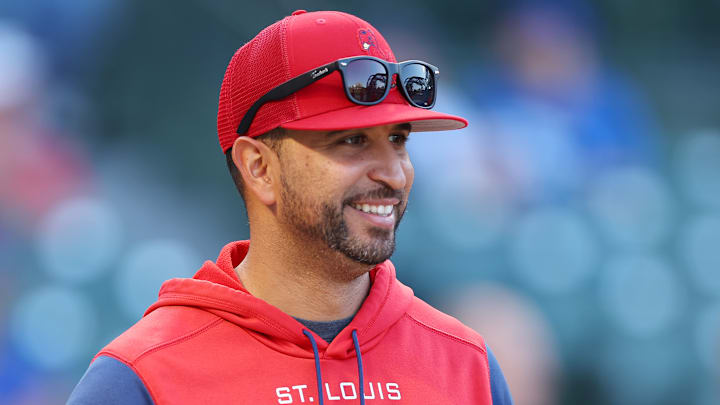Jordan Hicks, RHP
Best-case scenario: Seventh-inning reliever
Jordan Hicks has made it no secret that he would prefer to be a starting pitcher, but his time in that role in past seasons left a lot to be desired, as he struggled to work deep into games. However, when healthy, he has shown that he can be a weapon in the late innings with his record-setting fastball velocity. While Giovanny Gallegos and Ryan Helsley will be the main eighth- and ninth-inning relievers, respectively, a healthy Hicks could be a valuable bridge to them.
Worst-case scenario: Control issues and few strikeouts
Despite Hicks’ velocity, he has historically not missed many bats. His career strikeouts per nine innings rate is 8.8, and he has also struggled with his control. This spring, Hicks walked six batters in nine innings, and if he walks too many and can’t offset that with a lot of strikeouts, he will have no upside. He has also had issues staying healthy throughout his career, which is always a concern for pitchers who throw this hard.
Andrew Knizner, C
Best-case scenario: Serviceable backup
Andrew Knizner staved off Tres Barrera, no thanks to Knizner’s own performance this spring. If he is able to hit over .200 this season backing up Willson Contreras, I’d consider that a success. It would also help if he could clean up his defense, as he was nine defensive runs below average last season.
Worst-case scenario: Loses backup job
If Barrera flourishes in the minor leagues and Knizner’s poor spring translates to the regular season, the Cardinals might clear a spot on the 40-man roster for Barrera and use Knizner’s one remaining minor league option. Given the fact that Contreras will likely require more rest days than Yadier Molina did, the backup catcher position will prove more important than in years past, so performance will be more scrutinized.
Steven Matz, LHP
Best-case scenario: Top lefty in rotation
Steven Matz’s injuries and inflated ERA last season masked the best strikeout and walk rates of his career, and it’s possible that he breaks out and has a career year. He had a promising spring, pitching to a 1.53 ERA, striking out 17, and walking only three in 17.2 innings. It’s not out of the question for Matz to overtake Jordan Montgomery and be the best left-hander in the rotation.
Worst-case scenario: Bullpen arm
Matz has had a fairly consistent career, but he could be placed in the bullpen if injuries afflict him again and he isn’t able to return as a starter. He might be a strong long-relief option if he is relegated to that role, but the Cardinals will likely be desperate for starter production if that occurs.
